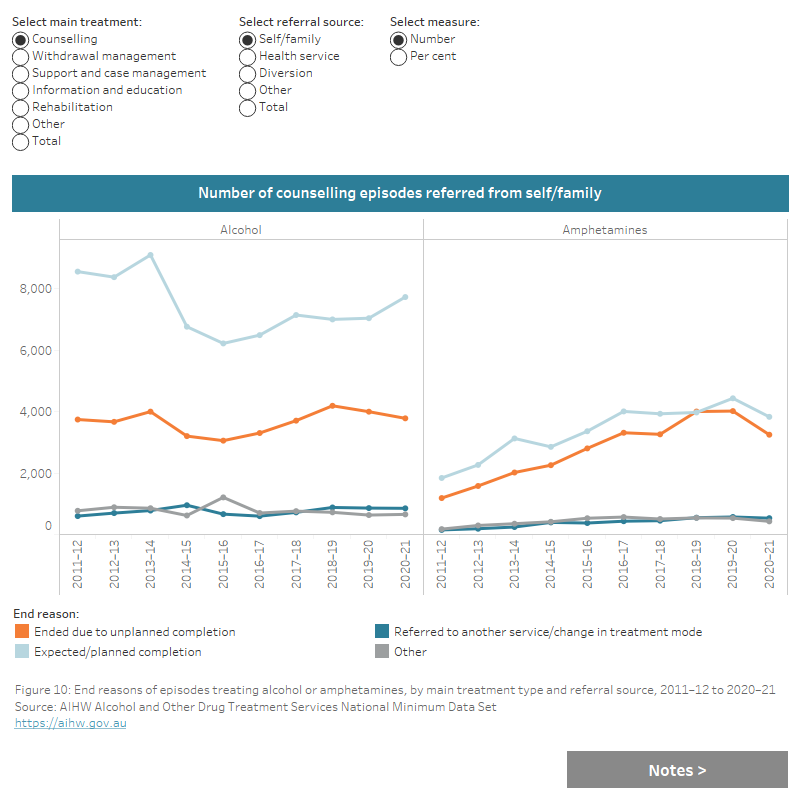Treatment type and referral source
Large changes in referral sources were observed in 2019–20, which likely reflects the impact of the COVID-19 pandemic and associated public health restrictions in the first half of the 2020 calendar year. For further information, please see Alcohol and other drug treatment services in Australia annual report, Treatment referral and completion.
Figure 10 shows yearly trends in end reasons of episodes treating alcohol or amphetamines between 2011–12 to 2020–21, by referral source and main treatment type.
Figure 10: End reasons of episodes treating alcohol or amphetamines, by main treatment type and referral source, 2011–12 to 2020–21
This interactive data visualisation shows yearly trends in number and proportion of episodes treating alcohol or amphetamines between 2011–12 to 2020–21. Episodes are presented by reason for cessation, main treatment and referral source.

Among episodes involving a referral from a diversion program, the proportion of episodes ending in a planned completion decreased sharply from 2018–19 to 2019–20:
- Among support and case management episodes for amphetamines as a principal drug of concern, episodes ending with a planned completion fell from 66% to 43%, while episodes ending with an unplanned completion increased from 21% to 38%.
- Among rehabilitation episodes treating:
- Alcohol: episodes ending in a planned completion fell from 54% to 45% while episodes with unplanned completion increased from 33% to 39%. Episodes involving referral to another service/change in treatment mode also increased from 3.3% to 13%.
- Amphetamines: episodes with planned completion fell from 45% to 38%, while episodes with unplanned completion increased from 42% to 50%.
These changes likely relate to changes to the delivery of diversion programs after the introduction of COVID-19 restrictions in March 2020, which saw sessions postponed or scheduled to occur by telephone. For further information, see COVID–19 impact on state and territory AOD treatment services.
For further detail, refer to Supplementary tables BLTN.14 and BLTN.15.


